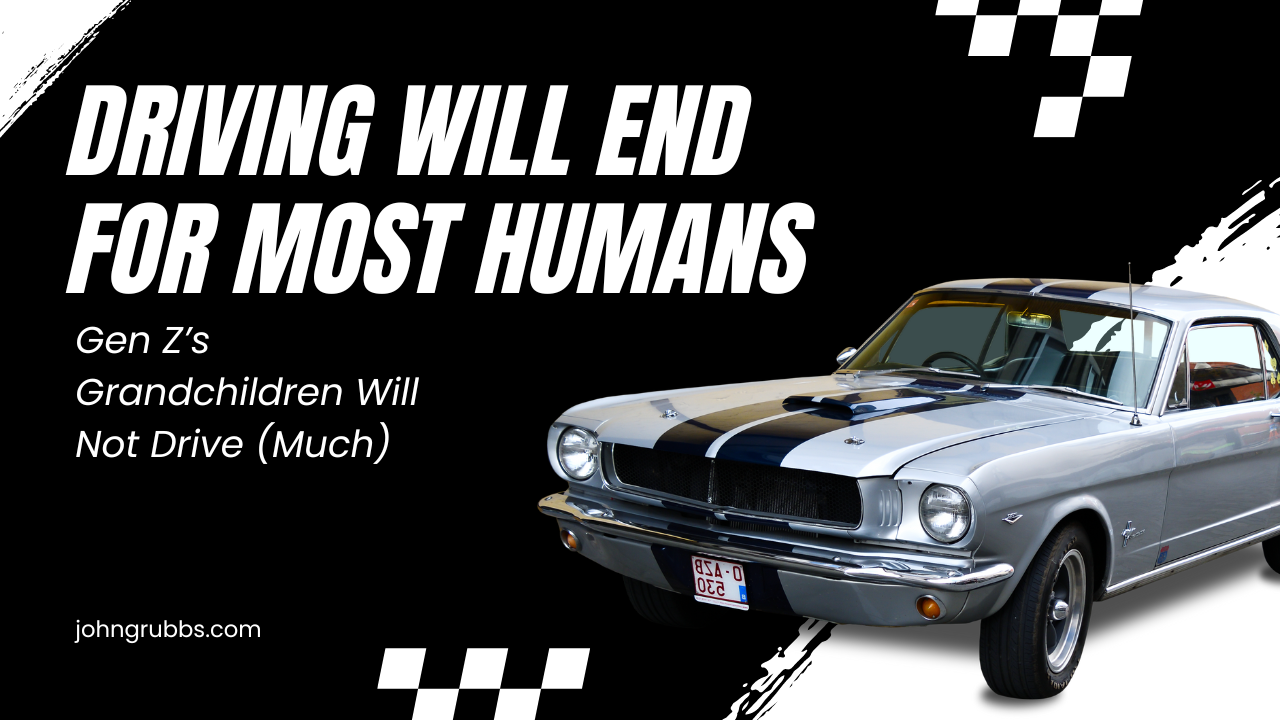|
Helping Companies Rethink, Recover & Refocus on the Future
Call John Grubbs (903) 295-7400
As we look toward the future, one of the most profound changes on the horizon is the transformation of personal transportation. For Generation Z, born between the late 1990s and early 2010s, driving symbolizes independence and freedom. However, their grandchildren are poised to experience a very different reality. The rapid advancement and proliferation of autonomous vehicles, controlled by sophisticated artificial intelligence (AI), are set to revolutionize transportation, making driving an optional skill rather than a necessity.
The Rise of Autonomous Vehicles
Autonomous vehicles, or self-driving cars, have evolved from science fiction to tangible reality within a few short decades. Companies like Tesla, Waymo, and Uber have been at the forefront of this technological revolution, investing billions into developing and testing autonomous driving systems. These systems leverage AI, machine learning, and many sensors to navigate roads, avoid obstacles, and ensure passenger safety without human intervention.
The potential benefits of autonomous vehicles are immense. They promise to reduce traffic accidents, many of which are caused by human error, and to provide mobility solutions for those who cannot drive, such as those with physical limitations. Additionally, they could optimize traffic flow and reduce congestion, leading to more efficient and environmentally friendly transportation networks.
Changing Skill Sets
As autonomous vehicles become more prevalent, the necessity of learning to drive will diminish. For Generation Z, learning to drive was almost a universal experience, a critical life skill taught in high school or by parents. However, for their grandchildren, the landscape will be very different. Driving will become a specialized skill, learned by those with a particular interest in automobiles or required by specific professions but not by most of the population.
This shift is analogous to the changes seen in other technological domains. For example...

